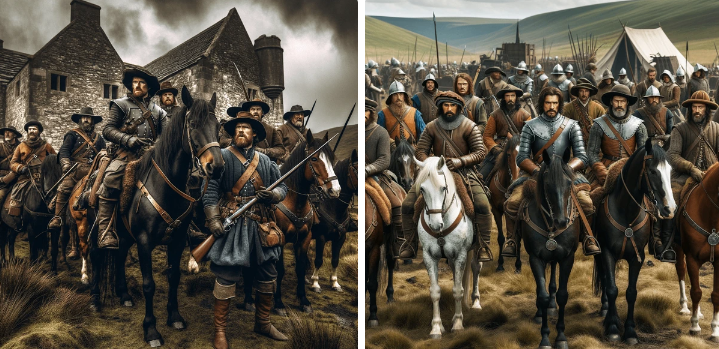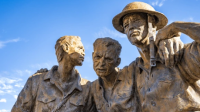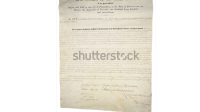Introduction: The Conclusion of a Tumultuous Conflict
The end of the English Civil War in 1648 marked the conclusion of one of the most significant and transformative periods in British history. The war, which had raged across the kingdoms of England, Scotland, and Ireland since 1642, pitted the forces of King Charles I against those of Parliament in a bitter struggle over governance, religion, and the rights of the monarchy. The conflict resulted in the defeat of the Royalists, the trial and execution of Charles I, and the establishment of a republican government known as the Commonwealth.
The conclusion of the civil war fundamentally altered the course of English history. It brought an end to absolute monarchy in England and set the stage for the rise of parliamentary sovereignty. The war’s aftermath saw profound changes in the political, religious, and social fabric of the nation, as well as the emergence of new ideas about governance, liberty, and the role of the state.
Read Also : The Gulf of Tonkin Incident (1964): Catalyst for the Vietnam War
The Final Years of the Civil War: A Nation at Breaking Point
The years leading up to the end of the English Civil War were marked by intense military and political conflict, as both sides struggled to gain the upper hand.
The Second Civil War: Renewed Hostilities and the Royalist Revival
The first phase of the English Civil War had ended in 1646 with the defeat of the Royalist forces and the capture of King Charles I by Parliament. However, the underlying tensions that had sparked the conflict remained unresolved, and in 1648, a series of Royalist uprisings and invasions by Scottish forces led to the outbreak of the Second Civil War.
The Second Civil War saw renewed hostilities across England and Scotland, as Royalist forces sought to restore Charles I to the throne. The king, who had been held in captivity by Parliament, secretly negotiated with the Scots, promising to support Presbyterianism in England in exchange for military assistance. This agreement, known as the “Engagement,” led to a Scottish invasion of England in support of the Royalists.
Despite initial successes, the Royalist forces were ultimately defeated by the New Model Army, the highly disciplined and effective military force created by Parliament. Key battles, such as the Battle of Preston in August 1648, resulted in decisive victories for Parliament, effectively ending Royalist hopes of restoring the king to power. The defeat of the Royalists in the Second Civil War paved the way for the final phase of the conflict and the eventual trial and execution of Charles I.
The Rise of the New Model Army: A Force for Parliament
The New Model Army played a crucial role in the eventual victory of Parliament over the Royalists. Formed in 1645, the New Model Army was a professional, centrally controlled military force that represented a significant departure from the more loosely organized regional forces that had previously fought on behalf of Parliament.
Under the leadership of Sir Thomas Fairfax and Oliver Cromwell, the New Model Army became a highly effective fighting force, characterized by its discipline, organization, and strong ideological commitment to the parliamentary cause. The army’s success in key battles, such as Naseby in 1645 and Preston in 1648, was instrumental in securing Parliament’s victory in the civil war.
The New Model Army was not only a military force but also a political entity. Many of its officers and soldiers were deeply committed to the radical ideas that had emerged during the conflict, including demands for political and religious reform, the abolition of the monarchy, and the establishment of a more egalitarian society. These ideas would come to the fore in the final stages of the war and the establishment of the Commonwealth.
The Capture of King Charles I: The Path to Regicide
The defeat of the Royalists in the Second Civil War left King Charles I in a precarious position. Captured by the Scots in 1646 and handed over to Parliament, Charles had spent the intervening years negotiating with various factions in an attempt to regain his throne. However, his continued refusal to make concessions on key issues, such as the role of the Church and the authority of Parliament, alienated many of his former supporters.
By late 1648, it had become clear to the leaders of Parliament and the New Model Army that Charles could not be trusted to negotiate in good faith. His secret dealings with the Scots and his attempts to rally Royalist forces had convinced many that the only way to secure a lasting peace was to remove the king from power permanently.
In December 1648, the army, under the leadership of Colonel Thomas Pride, carried out a purge of Parliament, removing those members who were still loyal to the king or opposed to his trial. This event, known as “Pride’s Purge,” left a “Rump Parliament” that was dominated by radical MPs and supportive of the army’s demands for justice. In January 1649, Charles I was put on trial for treason, and on January 30, he was executed outside the Banqueting House in Whitehall, London. The execution of Charles I was a shocking and unprecedented event, marking the first time in history that an English king had been tried and executed by his own subjects.
The Aftermath of the Civil War: The Rise of the Commonwealth
With the execution of Charles I, England entered a new and uncertain chapter in its history. The monarchy was abolished, and a republican government known as the Commonwealth was established.
The Abolition of the Monarchy: England Becomes a Republic
Following the execution of Charles I, Parliament moved quickly to abolish the monarchy and the House of Lords. On May 19, 1649, England was officially declared a republic, or Commonwealth, with power vested in the House of Commons and the Council of State. This marked a radical departure from the traditional system of government, in which the monarchy had been the central institution of authority.
The establishment of the Commonwealth was a bold experiment in republican governance, but it faced significant challenges from the outset. The country was deeply divided, with many Royalists refusing to accept the legitimacy of the new government. In addition, the Commonwealth had to contend with ongoing conflicts in Scotland and Ireland, where support for the Royalist cause remained strong.
Despite these challenges, the Commonwealth government, led by the Rump Parliament and the Council of State, sought to implement a series of reforms aimed at creating a more just and equitable society. These included efforts to promote religious toleration, legal reforms, and measures to address social and economic inequality. However, the Commonwealth was also marked by political instability, as tensions between the army, Parliament, and various factions within the government continued to simmer.
The Rule of Oliver Cromwell: The Protectorate and Beyond
One of the most significant figures in the aftermath of the English Civil War was Oliver Cromwell, who emerged as the dominant leader of the Commonwealth. Cromwell, a former MP and general in the New Model Army, played a key role in the defeat of the Royalists and the execution of Charles I. His influence continued to grow in the years following the war, and in 1653, he assumed the title of Lord Protector, effectively becoming the head of state.
Cromwell’s rule, known as the Protectorate, was characterized by a combination of military dictatorship and efforts at social and religious reform. He sought to promote Puritan values and to create a “godly” society, implementing measures to suppress vice and immorality. Cromwell also pursued an ambitious foreign policy, expanding English influence overseas and securing victories against the Dutch, Spanish, and Irish.
However, Cromwell’s rule was also marked by controversy and opposition. Many saw his assumption of power as a betrayal of the republican principles for which the civil war had been fought. His use of the army to dissolve Parliament in 1653 and his efforts to centralize power in his own hands led to accusations of tyranny. Despite his achievements, Cromwell’s rule was deeply unpopular with many sections of society, and his death in 1658 left the Commonwealth in a precarious position.
The Restoration of the Monarchy: The Return of King Charles II
The death of Oliver Cromwell in 1658 marked the beginning of the end for the Commonwealth. Without Cromwell’s leadership, the government struggled to maintain control, and divisions between the army, Parliament, and various political factions deepened. The Protectorate government, led by Cromwell’s son, Richard, was unable to command the same authority as his father, and by 1659, the Commonwealth was on the brink of collapse.
In 1660, the monarchy was restored with the return of King Charles II, the son of Charles I, to the throne. The Restoration marked the end of the Commonwealth and the return to traditional monarchical rule. Charles II was welcomed back by many who had grown disillusioned with the political turmoil and instability of the previous decade.
The Restoration did not simply return England to the pre-war status quo. The experiences of the civil war and the Commonwealth had profoundly altered the political landscape, leading to a new settlement that recognized the limits of royal power and the importance of Parliament. The monarchy was restored, but it was a constitutional monarchy, with the king’s powers checked by law and the influence of Parliament.
The Legacy of the English Civil War: A Nation Forever Changed
The end of the English Civil War and the establishment of the Commonwealth had a lasting impact on the political, religious, and social fabric of England. The war fundamentally reshaped the relationship between the monarchy and Parliament and set the stage for the development of modern British democracy.
The Impact on the Monarchy: From Absolutism to Constitutionalism
One of the most significant legacies of the English Civil War was the shift from absolutism to constitutionalism in the English monarchy. The execution of Charles I and the subsequent establishment of the Commonwealth demonstrated that the king’s authority was not absolute and that the monarchy could be held accountable by Parliament.
Although the monarchy was restored in 1660, the events of the civil war had fundamentally altered the balance of power between the king and Parliament. The Glorious Revolution of 1688, which resulted in the overthrow of James II and the establishment of a constitutional monarchy under William and Mary, can be seen as a direct consequence of the changes that began with the civil war.
The English Civil War laid the groundwork for the development of a political system in which the powers of the monarchy were limited by law and subject to the will of Parliament. This shift toward constitutionalism would have a profound impact on the development of British political institutions and the evolution of democracy in the centuries that followed.
The Religious Consequences: A Nation Divided by Faith
The English Civil War also had significant religious consequences, as it was closely intertwined with the religious conflicts of the time. The war was fought in part over issues of religious authority and the role of the Church of England, and it led to a period of intense religious experimentation and diversity.
During the Commonwealth period, radical religious groups, such as the Puritans, Quakers, and Baptists, gained prominence and were able to practice their faith with greater freedom. However, the Restoration of the monarchy brought with it a reassertion of the authority of the Church of England and the persecution of nonconformist groups.
The religious divisions that emerged during the civil war would continue to shape English society for centuries to come. The conflict between Anglicans, Catholics, and nonconformists remained a central issue in British politics and society, influencing everything from the Glorious Revolution to the debates over religious toleration in the 18th and 19th centuries.
The Social and Economic Impact: A Nation Rebuilt
The English Civil War had a profound impact on the social and economic fabric of the nation. The war brought widespread destruction and loss of life, with towns and villages across the country suffering the effects of prolonged conflict. The economic disruptions caused by the war led to hardship for many, particularly in the rural areas that were hardest hit by the fighting.
However, the war also brought about significant changes in English society. The rise of the New Model Army and the political activism of its soldiers and officers contributed to the spread of radical ideas about social equality, political representation, and individual rights. The Levellers, for example, advocated for the extension of the franchise and greater equality before the law, ideas that would influence later democratic movements.
The social changes brought about by the civil war also had a lasting impact on the structure of English society. The decline of the old feudal order and the rise of new commercial and professional classes contributed to the growth of a more dynamic and mobile society. These changes laid the foundations for the economic and social transformations that would characterize the Industrial Revolution and the development of modern Britain.
Conclusion: The End of the Civil War and the Beginning of a New Era
The end of the English Civil War in 1648 marked the conclusion of a tumultuous period in British history, but it also heralded the beginning of a new era. The war had fundamentally altered the relationship between the monarchy and Parliament, setting the stage for the development of constitutional government and the rise of parliamentary sovereignty.
The legacy of the civil war is complex and multifaceted. It was a time of great suffering and upheaval, but it was also a period of profound change and innovation. The ideas and institutions that emerged from the conflict would shape the course of British history for centuries to come, influencing everything from the development of democracy to the evolution of religious toleration.
The end of the civil war was not the end of the story. The conflicts and divisions that had sparked the war continued to play out in the years that followed, leading to further struggles over the nature of government, the rights of individuals, and the role of religion in society. But the war had also opened up new possibilities for political and social change, possibilities that would be explored and expanded upon in the years to come.
FAQ About the End of the English Civil War (1648)
What led to the end of the English Civil War?
The English Civil War ended in 1648 after the defeat of the Royalist forces in the Second Civil War. The capture and execution of King Charles I in 1649 marked the definitive end of the conflict, leading to the establishment of the Commonwealth.
What was the role of the New Model Army in ending the war?
The New Model Army, a professional and ideologically committed military force created by Parliament, played a crucial role in defeating the Royalists and ending the English Civil War. Its victories in key battles, such as the Battle of Preston in 1648, were instrumental in securing Parliament’s victory.
What happened to King Charles I after the war?
After the war, King Charles I was captured by Parliament and put on trial for treason. He was found guilty and executed on January 30, 1649. His execution marked the first time in history that an English king had been tried and executed by his own subjects.
How did the end of the civil war lead to the establishment of the Commonwealth?
Following the execution of Charles I, the monarchy and the House of Lords were abolished, and England was declared a republic, known as the Commonwealth. The Commonwealth was governed by the Rump Parliament and the Council of State, with Oliver Cromwell emerging as a key leader.
What was the long-term impact of the English Civil War on Britain?
The English Civil War had a lasting impact on the political, religious, and social fabric of Britain. It led to the development of constitutional government, the rise of parliamentary sovereignty, and significant changes in religious and social life. The war also set the stage for the Glorious Revolution and the eventual establishment of a constitutional monarchy.







I have observed that in unwanted cameras, specialized receptors help to aim automatically. The actual sensors involving some cameras change in contrast, while others employ a beam associated with infra-red (IR) light, especially in low lumination. Higher specification cameras from time to time use a combination of both models and could have Face Priority AF where the photographic camera can ‘See’ any face while keeping your focus only in that. Thank you for sharing your ideas on this blog site.